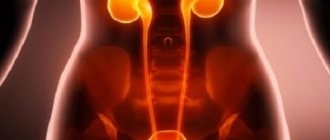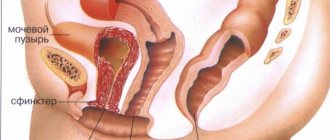The disease adrenal hyperandrogenism is caused by increased synthesis of androgen hormones, which entails the manifestation of atypical features for the opposite sex. The disease is more common in females. Scientists believe that the disease is genetic in nature and occurs due to congenital pathology of the adrenal glands. In 90% of recorded cases, hyperandrogenism develops against the background of C21-hydroxylase deficiency.
General information
Virilization (masculinization) of adrenal origin is caused by excessive production of androgenic hormones by the adrenal glands and leads to external and internal changes that are atypical for the patient’s gender. Androgens are essential in the body of an adult woman because they are responsible for important transformations in the body during puberty. In particular, they produce estrogen synthesis, and also help strengthen bone tissue, muscle growth, participate in the regulation of liver and kidney function, and the formation of the reproductive system. Androgens are produced mainly by the adrenal glands and in the female body by the ovaries, and in the male body, respectively, by the testicles. A significant excess of the normal levels of these hormones in women can significantly upset the reproductive system and even provoke infertility.
Prevention
There are no specific measures to prevent hyperandrogenism, since this syndrome develops at the hormonal level.
General preventative measures include:
- balanced diet, including foods rich in fiber in the menu, weight control;
- quitting smoking and alcohol abuse;
- regular visits to the gynecologist;
- taking medications and contraceptives only after a doctor’s recommendation;
- timely treatment of pathologies of the thyroid gland, liver and adrenal gland diseases.
Hyperandrogenism is not only problems with the skin, hair and menstrual cycle. This is a general disease of the body that does not allow a woman to lead a quality lifestyle and often deprives her of the joys of motherhood. Modern methods of diagnosis and treatment make it possible to identify pathology in time and successfully eliminate its manifestations.
Causes of adrenal hyperandrogenism
The main reason for the accumulation of androgens in the body is a congenital defect in the synthesis of enzymes, which prevents the conversion of steroids. Most often, this defect is caused by a deficiency of C21-hydroxylase, which synthesizes glucocorticoids. In addition, hormonal imbalance is a consequence of the influence of hyperplasia of the adrenal cortex or tumor-like formations (some types of adrenal tumors are capable of producing hormones). The most common diagnosis is the presence of congenital adrenal hyperandrogenism. However, sometimes there are cases of the development of hyperandrogenism due to tumors of the adrenal glands that secrete androgens (Cushing's disease).
How to recognize the disease?
It is impossible to independently diagnose hyperandrogenism, since the same symptoms can be a manifestation of other diseases. When conducting a diagnosis, the doctor must first of all exclude diseases that accompany this pathology (Cushing's syndrome, neoplasms of the adrenal glands, ovaries). An important task in establishing hyperandrogenism is to identify the causes that caused it. This is due to the fact that the direction of treatment carried out in the future depends directly on what caused this disease. Therapy will be effective only if the factors that caused the pathological processes are correctly identified. It is determined when the first symptoms of the disease appeared - during puberty or later. In many cases, this will help to establish which organ pathology caused the disease - the ovaries or the adrenal glands.
To diagnose the disease, the following tests must be performed:
- blood and urine tests for hormones. Considering that the hormonal background of patients is unstable, blood sampling is repeated three times with an interval of 30 minutes, then it is mixed and analyzed;
- Ultrasound of the pelvis;
- CT and ultrasound of the adrenal glands.
If necessary, additional diagnostic methods may be prescribed.
Features of the development of adrenogenital syndrome in women
Adrenogenital syndrome in women leads to serious changes in the functioning of the ovaries and disorders in the reproductive system. According to statistical studies, every fifth woman suffers from hyperandrogenism to one degree or another with various manifestations. Moreover, age does not matter in this case; the disease manifests itself at any stage of the life cycle, starting from infancy.
The effect of hyperandrogenism on ovarian function causes the following manifestations:
- inhibition of the growth and development of follicles in the early phase of folliculogenesis is manifested by amenorrhea (absence of menstruation for several cycles);
- slowing down the growth and development of the follicle and egg, which is not capable of ovulation, can manifest itself as anovulation (lack of ovulation) and oligomenorrhea (increasing the interval between menstruation);
- ovulation with a defective corpus luteum, expressed in insufficiency of the luteal phase of the cycle, even with regular menstruation.
What is the danger of the disease
The most serious consequence of the disease is infertility, since with increased concentrations of androgens in the blood serum, follicles cannot grow and mature normally.
If pregnancy does occur, then there is a significant probability of its termination in the early stages or fading of fetal development.
We recommend reading about polycystic ovary syndrome. You will learn about the causes and symptoms of PCOS, possible complications, ultrasound and other diagnostic methods, and treatment.
And here is more information about ovarian dysfunction.
Symptoms of adrenal hyperandrogenism
Adrenogenital syndrome has primary and secondary manifestations, depending on the phase of development of the disease and the factors of its occurrence. Indirect signs of adrenal hyperandrogenism in a woman include frequent colds, a tendency to depression, and increased fatigue.
The main symptoms of adrenal hyperandrogenism:
- increased hair growth (extremities, abdomen, mammary glands), up to hirsutism (hair growth on the cheeks);
- baldness with the formation of bald patches (alopecia);
- skin imperfections (acne, pimples, peeling and other inflammations);
- muscle atrophy, osteoporosis.
The secondary symptoms of adrenogenital syndrome are the following:
- arterial hypertension, manifested in the form of attacks;
- elevated blood glucose levels (type 2 diabetes);
- rapid gain of excess weight, up to obesity, requiring therapy;
- intermediate type of formation of female genital organs;
- absence of menstruation or significant intervals between menstruation;
- infertility or miscarriage (for a successful pregnancy, a certain amount of female hormones in the body is necessary, the production of which practically stops in the event of hyperandrogenism).
Formation mechanism
The synthesis of androgens (male sex hormones) occurs in the testicles and adrenal glands. This process in the initial stages occurs equally in both organs and is common to androgens and other steroids produced by the adrenal glands: cortisone, corticosterone and aldosterone. The main enzymes that serve the stages of successive transformations of testosterone precursors are hydroxylases and dehydrogenases.
It would seem that since the matter concerns male sex hormones, then the pathology should be characteristic only of boys, but this is not so, since at the initial stages the biosynthesis of estrogens (female sex hormones) is no different from that in men, therefore these mutations are also possible in female individual.
And when a girl exhibits traits of the opposite sex, it is customary to talk about adrenogenital syndrome, which can be represented by three clinical forms:
- congenital;
- postnatal or prepubertal;
- post-pubertal.
Hormonal changes cause a violation of sexual differentiation, which often begins in the prenatal period and then continues in the postnatal period. Of course, if adrenogenital syndrome manifests itself in newborns, then one can hardly question its congenital hereditary nature. This form of hyperandrogenism is called classical, and it often puts neonatologists in a difficult position when determining the sex of the child.
Complications
Adrenal hyperandrogenism is a serious pathology that can lead to significant complications. With congenital hyperandrogenism, abnormal development of the genital organs occurs. Disorders of the reproductive system can lead to miscarriage, chronic inability to bear a child, and infertility. With hyperandrogenism resulting from adrenal tumors, there is a risk of developing malignant neoplasms and metastasis.
Diagnostic measures
At the very beginning, the doctor must conduct a differential diagnosis, excluding other specific diseases. We are talking about the following pathologies:
- Acromegaly;
- Liver ailments;
- Abnormal differentiation by sex;
- Cushing's syndrome;
- Tumors of the adrenal glands that can secrete androgens.
The diagnosis of adrenal hyperandrogenism can only be made after all proper diagnostic procedures. First of all, the patient is prescribed the following tests:
- Study of hormonal levels. Modern laboratory examination methods make it possible to accurately determine the amount of prolactin, free and total testosterone, and the level of FSH in the blood. Due to the fact that hormonal substances are produced unevenly throughout the day, samples are taken three times a day;
- Identification of ketosteroids in urine;
- Markers on CG.
Uncontrolled and uncontrollable hypertension is a disease of adrenal origin, therefore tests and studies traditional for identifying hypertension pathologies are also relevant. The patient is required to undergo an intravaginal ultrasound examination; Diagnosis using MRI or CT is relevant if the characteristics of the patient’s body need to be studied in great detail. To accurately establish the type and characteristics of the course of the disease, ultrasound diagnostics can be performed several times.
Therapy of adrenogenital syndrome
Treatment of adrenal hyperandrogenism is aimed primarily at normalizing hormonal levels and eliminating external negative manifestations of hormonal imbalance. Increased levels of androgens in the body are neutralized with the help of drugs that increase the amount of female hormones (for example, Dexamethasone, Metipret).
Hormonal therapy in women directly depends on the patient’s plans for the future. If a woman does not plan to conceive a child, then oral contraceptives with an antiandrogenic effect are prescribed (for example, “Zhanine”, “Yanina”). To eliminate skin manifestations, the oral contraceptive “Diane-35” is useful, which is prescribed in conjunction with the drug “Androkur” to enhance the effect. However, the result will appear only after three months of therapy. If you are planning a pregnancy, medications are prescribed that activate the release of the egg. In the absence of a therapeutic effect, surgical intervention in the form of a wedge-shaped resection of the ovaries is possible in order to stimulate the release of the egg. Surgery is also indicated in the presence of adrenal tumors (tumors must be surgically removed).
Medicinal herbs are used as folk remedies for regulating hormonal levels. There are a lot of plants that have a beneficial effect on metabolic processes and help normalize hormonal balance (angelica, black cohosh, licorice root, mint, peony, sacred twig, etc.). However, the use of herbal remedies is possible only as a complement to medical therapy; it is impossible to independently eliminate the pathology with folk remedies.
Establishing diagnosis
Diagnosis of the pathological condition includes an external and gynecological examination of the patient, analysis of her complaints about general health. Pay attention to the duration of the menstrual cycle, the localization of excess hair, body mass index, and the appearance of the genitals.
What tests need to be taken to determine androgen levels?
Doctors (gynecologist, endocrinologist, geneticist) prescribe the following studies:
- determination of the level of testosterone, follicular hormone, prolactin, estradiol in the blood and cortisol in the urine;
- tests with dexemethasone to determine the cause of the syndrome;
- Ultrasound of the ovaries and adrenal glands;
- CT scan of the pituitary gland;
- studies of glucose, insulin, cholesterol levels.
An ultrasound of the pelvic organs will determine the possible presence of polycystic ovary syndrome. Testing is necessary to determine the type of disease.
Materials for research are taken in the morning, before meals. Since hormonal levels are unstable, for an accurate diagnosis three samples are taken at intervals of at least half an hour. It is advisable to take tests in the second half of the menstrual cycle, closer to the expected start of menstruation.
Conservative treatment methods
If your doctor has diagnosed you with hyperadrogenism, this does not mean that urgent surgery is necessary. In most cases, the problem can be dealt with using less radical methods, but this is only if the treatment is not left to chance. What can the doctor offer the patient?
- Review your own diet. After all, excess body weight is one of the risk factors. Try to reduce your intake of high-calorie foods by switching to a low-calorie diet.
Try to reduce your intake of high-calorie foods by switching to a low-calorie diet
- Workout. If you don’t like the prospect of becoming an Olympic champion, you still need to devote at least one hour to physical education three times a week. It’s a good idea to purchase a membership to a swimming pool or aerobics class, as well as walk more and travel less on public transport.











